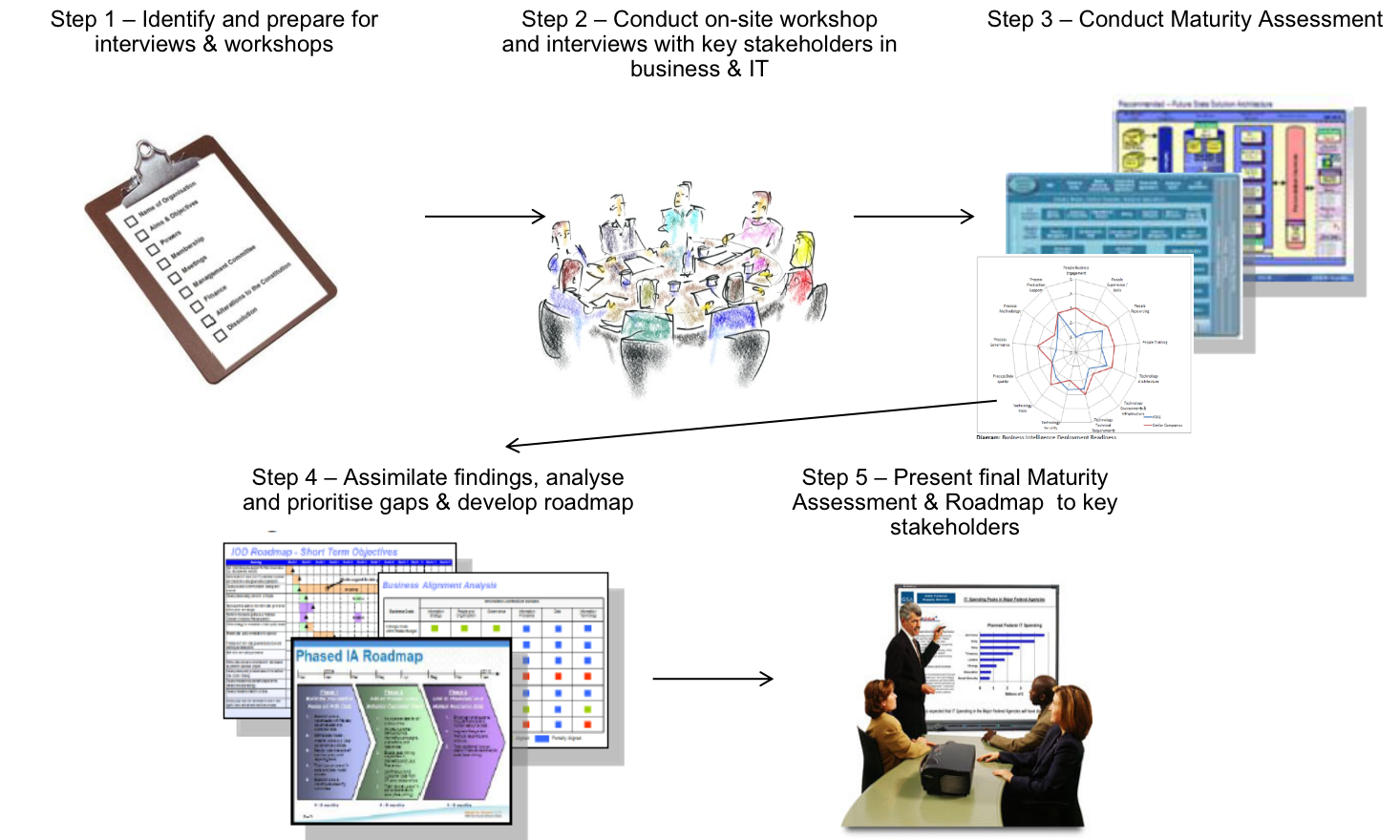Data Governance - Maturity Assessment
Overview
Input:
- Maturity Model
- Framework
- Questions
Output:
- Maturity Assessment Report
Assessing data governance maturity
-
Open Discussion with Stakeholders:
- Engage in one-on-one interviews, group workshops, and consultation with Subject Matter Experts (SMEs).
-
Assessment Approach:
- Use pre-determined questions to evaluate current maturity levels and determine the desired state.
-
Identify Maturity Levels:
- Assess the current state maturity and define the desired state.
-
Educational Process:
- Ensure the assessment is an educational process for stakeholders.
-
Importance of Maturity Assessment:
- The success of the data governance initiative can be significantly impacted by a Maturity Assessment.
-
Key Component:
- The biggest part of the process is consulting with stakeholders and experts.

Decide on a model
-
Existing Solutions:
- Check for Similar Solutions: Determine if there are existing tools or processes within your organization that can be utilized or adapted for data governance.
-
Vendor Solutions:
- Leverage Vendors: Explore whether there are vendor solutions that can be leveraged to meet your data governance needs.
-
Alternative Options:
- Explore Other Options: Consider if there are other tools or approaches that better suit your specific requirements.
Questions to be asked
Key questions to address when defining a data governance program or initiative:
-
Scope:
- What is the scope of your program or initiative?
-
Data Governance:
- What data will be governed under this program?
-
Stewardship Approach:
- How will you approach stewardship of the data?
-
Business Drivers and Benefits:
- What are your business drivers and the benefits of the program?
-
Measuring Success:
- How will you measure success or progress of the data governance initiative?
-
Data Governance Organization:
- Who is involved in your Data Governance Organization?